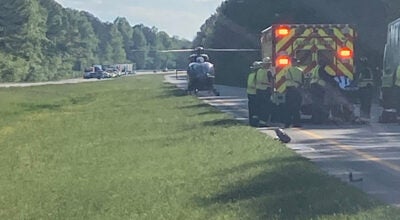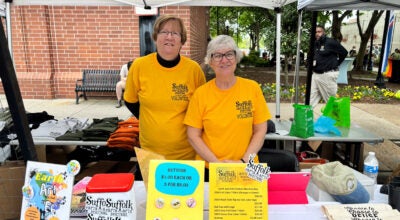A life-saving skill
Published 9:15 pm Saturday, July 10, 2010
Knowing to how administer CPR and rescue breathing on someone who has stopped breathing or doesn’t have a pulse isn’t only for Girl Scouts, babysitters and lifeguards.
It could be your child, your friend or your parent, and it could happen anywhere.
Knowing CPR and rescue breathing is a necessary life-saving skill that the more people know, the safer a community will be, according to Lisa Harrell, Suffolk American Red Cross Director of Health and Safety Services.
“The benefit of knowing how and when to do it is worth a life,” Harrell said. “If you’re able to help someone who has stopped breathing sustain oxygen rich blood, you can keep them from losing the ability to do many of the things they could do before that incident. We want to make Suffolk a safer place to live and visit. This is a way to do that.”
While the Suffolk American Red Cross offers extensive classes on the subject twice a month, there are some basics that every person should know incase of an emergency.
After first getting someone to call 911, you check their consciousness and if they have a pulse.
“Once you’re at the side of the victim, check for consciousness,” Harrell said. “If they’re conscious always obtain consent. If they’re unconscious, consent is implied — you should tap their shoulder or shake them though. Wait no longer than 10 seconds for consciousness, knowing that after 10 minutes brain damage is irreversible.”
After checking for their pulse, “You only want to administer CPR if they have no pulse,” Harrell said. “If they’ve only stopped breathing but still have a pulse, you only need to provide oxygen to them. CPR could only do damage if their heart hasn’t stopped beating.”
At that point, Harrell said while there are finer points to the proper administration of CPR, not to let fear of the perfect application of CPR get in your way of doing it.
“If you’ve detected they’re not breathing and their pulse is stopped, you go straight into placing your hands, palm down with elbows straight, in the center of their chest and compress their chest down two inches,” Harrell said. “When giving breaths, you must tilt their head back to open their trachea and plug their nose before breathing.”
Once cycle should last two minutes, and include 30 compressions and two breaths, one at the beginning and one after 15 compressions.
“Don’t stop until you see signs of life,” Harrell said.
In the case that you’re applying CPR to a smaller child, it’s recommended to use one hand and shallower compressions, about one or one-and-a-half inch instead of two inches.
When applying CPR to an infant, use only two or three fingers and very light compressions, a half inch to one inch, and when breathing place your mouth over their nose and mouth instead of pinching their nose.
“I tell people to use common sense,” Harrell said. “While you’re more gentle with children and infants, the same is true for elderly. You need to use force, but not undue force.”
Knowing how to perform rescue breathing and CPR isn’t enough to save a life though.
“I know plenty of people who know how to do CPR because of their job, but they’re scared of doing any harm,” Harrell said. “People who just want to do good shouldn’t be worried about trying to help someone. If you’re doing it in good faith, the Good Samaritan Law will protect you.”
The Suffolk American Red Cross offers a full day’s course of standard first aide classes with adult, child and infant CPR classes twice a month for $55.
For those uncomfortable in a classroom setting, it has an on-line class available, for which you return to the office for the exam.






